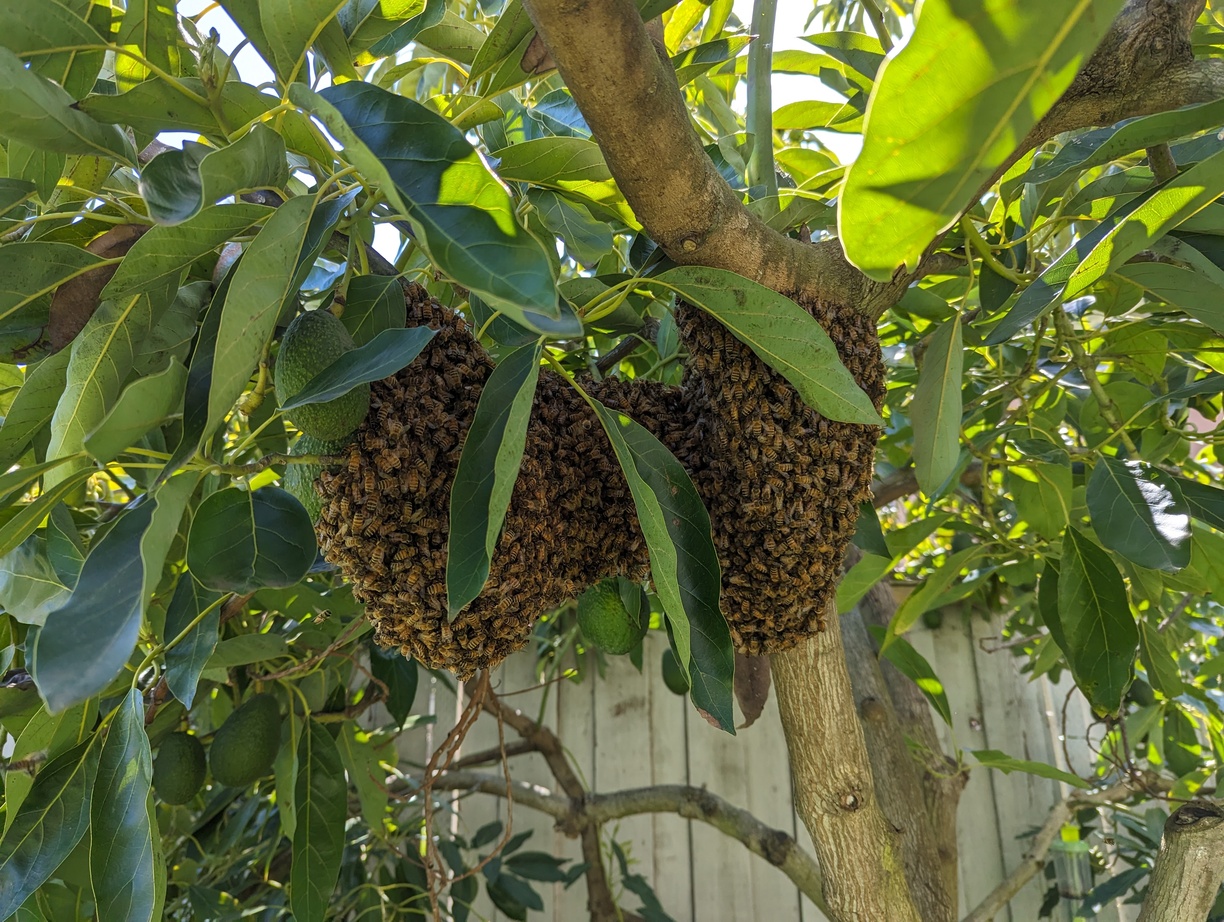Enjoy some pictures from our Apiary.
Our Apiary
 Here's our small apiary. We generally have between
three and six colonies at any given time.
Here's our small apiary. We generally have between
three and six colonies at any given time.
Capped Honey
 This is a fully capped frame of honey. The bees have
filled each cell in the honeycomb with nectar from flowers.
They've dehydrated the syrup until it's more than 80% sugar and
less than 20% water. In this super-sugary environment pests
cannot survive. Once the bees are happy with it, they cap it
with a wax "lid". Sometimes you might find a small amount of
this wax in jars of our honey. We strain our honey to remove most
of the wax cappings, but occasionally one or two fall through.
This is a fully capped frame of honey. The bees have
filled each cell in the honeycomb with nectar from flowers.
They've dehydrated the syrup until it's more than 80% sugar and
less than 20% water. In this super-sugary environment pests
cannot survive. Once the bees are happy with it, they cap it
with a wax "lid". Sometimes you might find a small amount of
this wax in jars of our honey. We strain our honey to remove most
of the wax cappings, but occasionally one or two fall through.
Open Brood
 Bee colonies are usually broken into two sections. The
first is the broodnest - this is where the Queen lives and makes
her baby bees with the help of her workers. This is a frame from
a broodnest. Look for small "C" shapped larvae inside the
honeycomb cells. These larvae come from eggs that were laid about
five days prior.
Bee colonies are usually broken into two sections. The
first is the broodnest - this is where the Queen lives and makes
her baby bees with the help of her workers. This is a frame from
a broodnest. Look for small "C" shapped larvae inside the
honeycomb cells. These larvae come from eggs that were laid about
five days prior.
Open Brood (Zoom)
 Here's a zoomed-in view of open brood. You can see very
young larvae all the way through mature larvae that are soon to
pupate. Notice that the small larvae are all swimming in an
off-white pool of fluid. This is the first food that bees eat,
and its provided to them by the worker bees walking around on the
comb.
Here's a zoomed-in view of open brood. You can see very
young larvae all the way through mature larvae that are soon to
pupate. Notice that the small larvae are all swimming in an
off-white pool of fluid. This is the first food that bees eat,
and its provided to them by the worker bees walking around on the
comb.
Capped Brood
 Open brood eventually matures and the larvae inside
pupate. When this occurs other bees in the colony cap the cell to
give the young bee time to mature. Underneath each of these
golden brown cells is a bee pupa. Judging based on the color of
the cappings they'll likely hatch in a few days.
Open brood eventually matures and the larvae inside
pupate. When this occurs other bees in the colony cap the cell to
give the young bee time to mature. Underneath each of these
golden brown cells is a bee pupa. Judging based on the color of
the cappings they'll likely hatch in a few days.
Swarm!
 When bee colonies are ready to reproduce they send out
swarms. Swarms are made up of a few pounds of worker bees, and
generally one queen bee. They will settle in a tree while some of
them look for a more permanent home.
When bee colonies are ready to reproduce they send out
swarms. Swarms are made up of a few pounds of worker bees, and
generally one queen bee. They will settle in a tree while some of
them look for a more permanent home.












